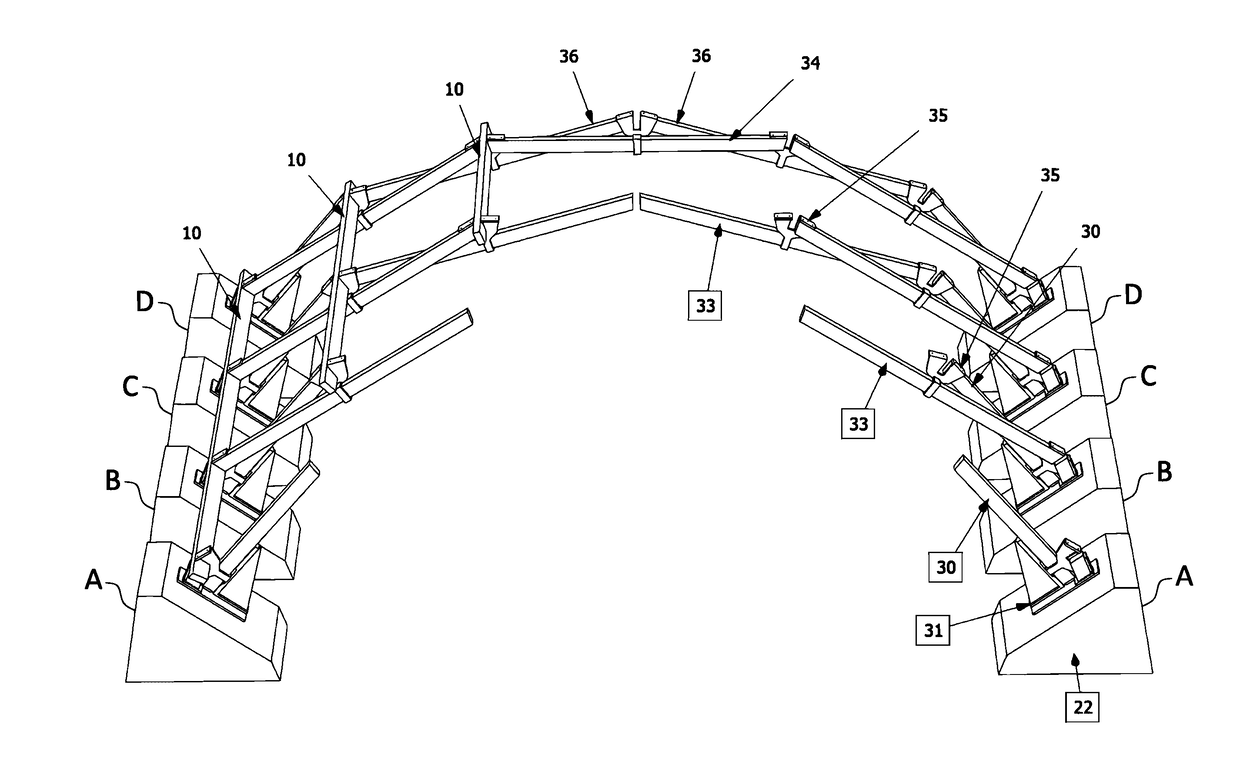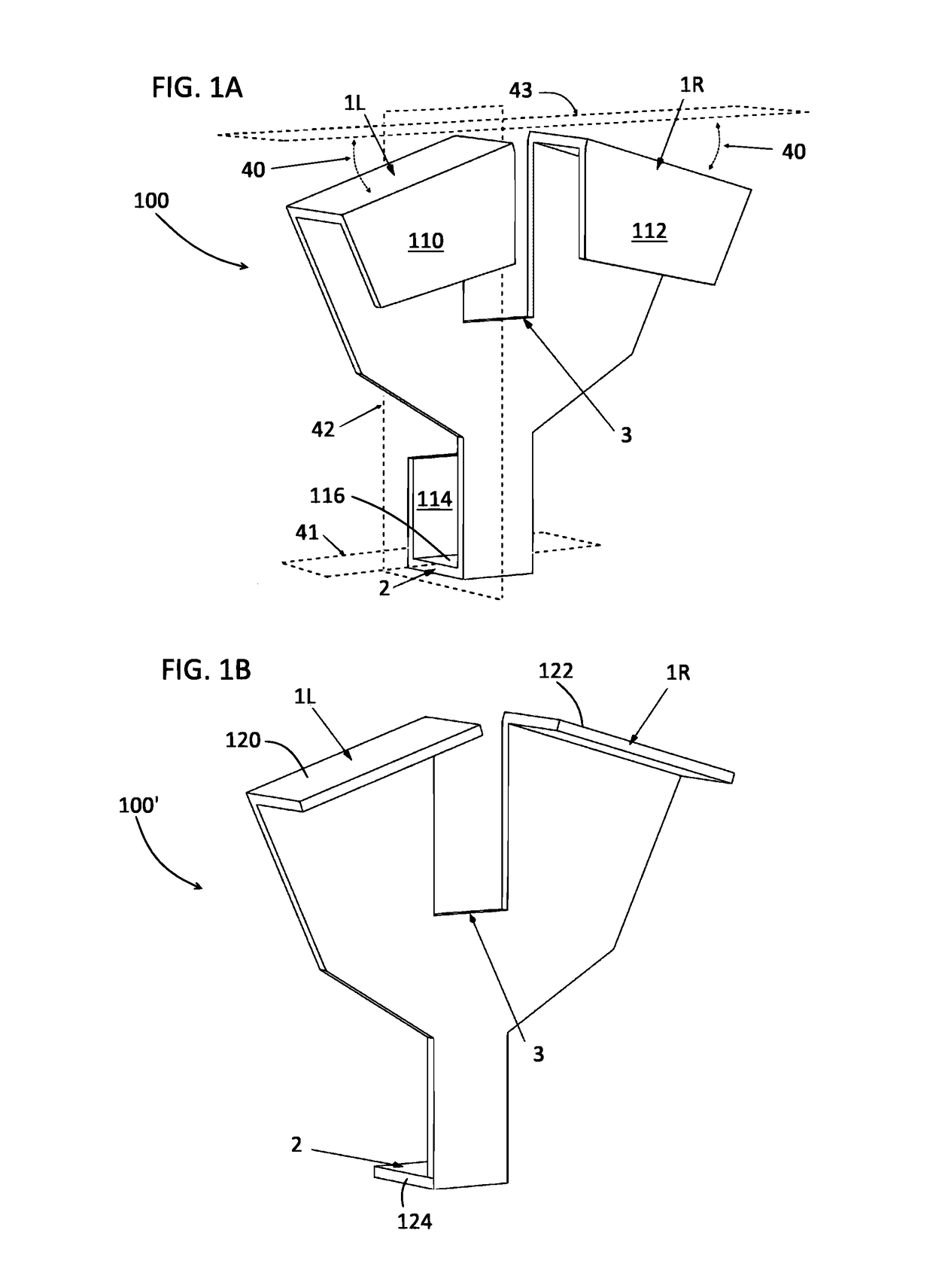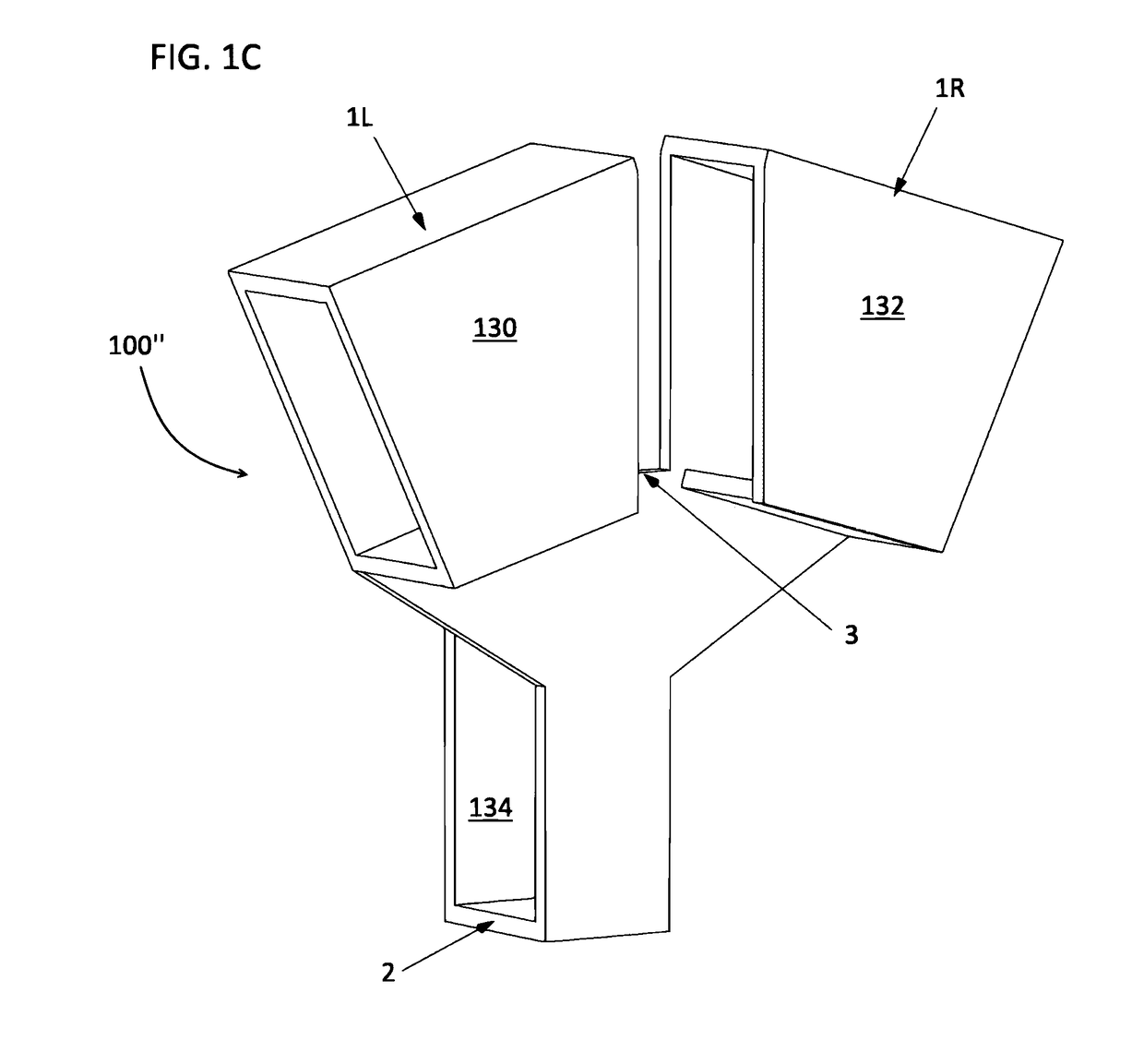Beam connector for arch structure
a technology for connecting beams and arch structures, applied in the direction of roofs, constructions, roofs, etc., can solve the problems of increasing costs, unstable end-to-end alignment of beams, and difficulty in double row or larger polygonal arches, so as to add convenience during construction, or achieve structural durability
- Summary
- Abstract
- Description
- Claims
- Application Information
AI Technical Summary
Benefits of technology
Problems solved by technology
Method used
Image
Examples
Embodiment Construction
[0041]Referring to FIG. 1A, one embodiment of the invention is a Y-shaped structural connector 100 having three U-shaped brackets designed to bind three stringer beams to the union created by the connector. One U-shaped bracket is located on each arm of the KY′. Each of the brackets 110 and 112 form the upper arms 1L, 1R, respectively, of the ‘Y’ shaped connector 100. Each of these brackets 110, 112 binds the end of a stringer beam to the connector 100. The top brackets are aligned with each other so that they are mirror images of each other relative to the vertical, front-to-back midplane 42 of the connector 100. The U-shaped bracket 114 forms the bottom arm 2 of connector 100. Bracket 114 binds the midsection of a third stringer beam to the connector 100. The bottom bracket 114 is aligned with the top brackets 110 and 112 so that a beam fully inserted into either top bracket 110, 112 will slope toward the level of the bottom surface 116 of the bottom bracket 114. Both top brackets...
PUM
 Login to View More
Login to View More Abstract
Description
Claims
Application Information
 Login to View More
Login to View More - R&D
- Intellectual Property
- Life Sciences
- Materials
- Tech Scout
- Unparalleled Data Quality
- Higher Quality Content
- 60% Fewer Hallucinations
Browse by: Latest US Patents, China's latest patents, Technical Efficacy Thesaurus, Application Domain, Technology Topic, Popular Technical Reports.
© 2025 PatSnap. All rights reserved.Legal|Privacy policy|Modern Slavery Act Transparency Statement|Sitemap|About US| Contact US: help@patsnap.com



